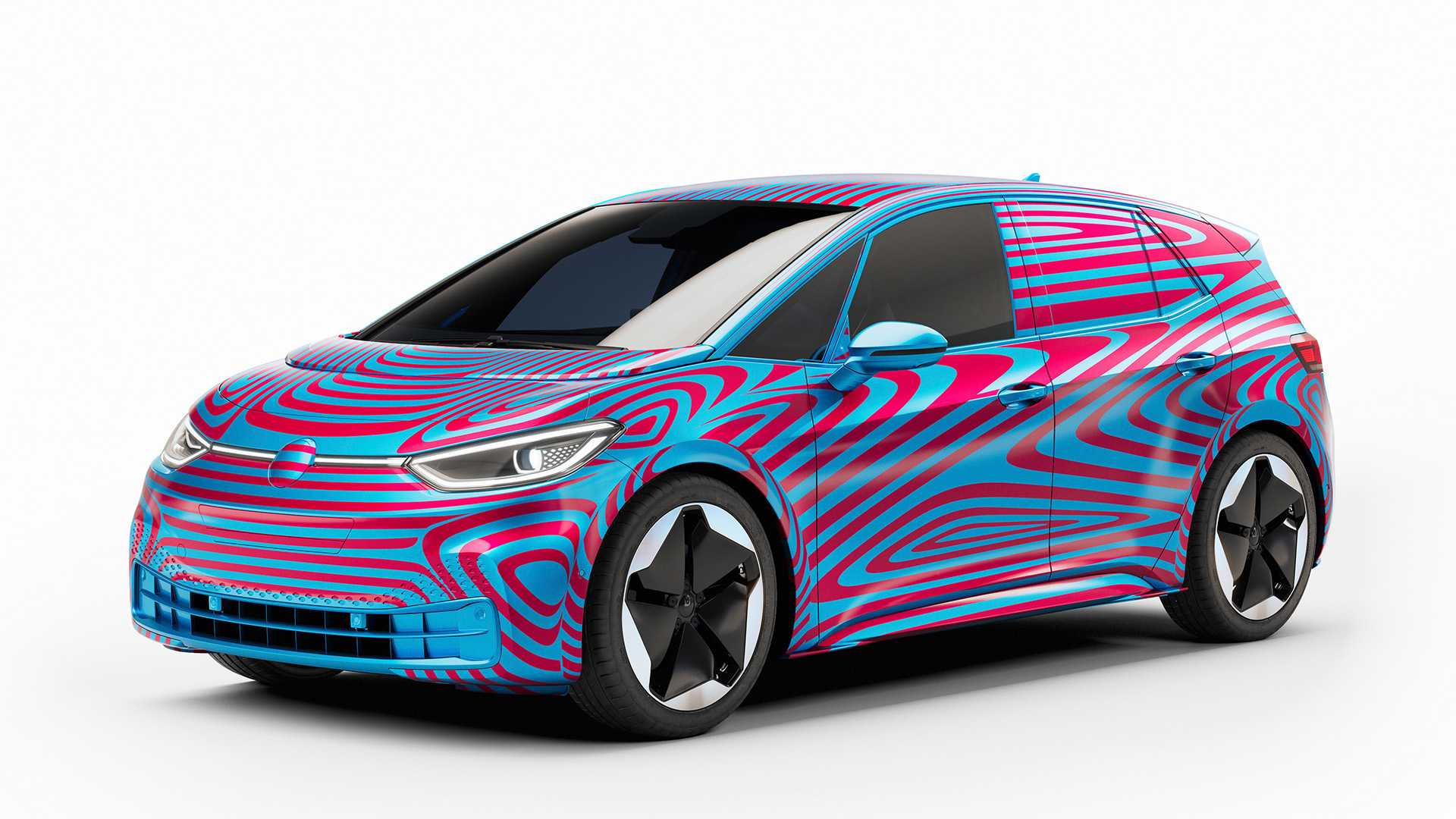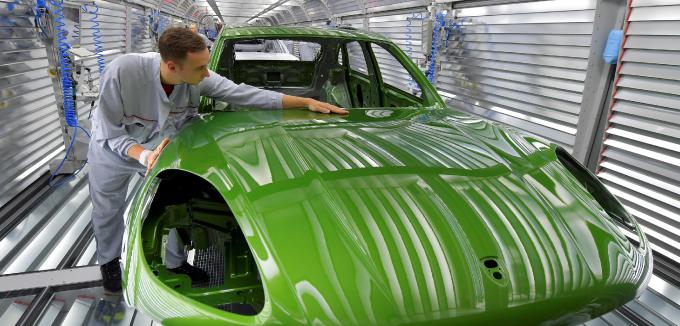19.07.2019: In an interview, Volkswagen s CEO explains the Group s three strategic goals. At a glance which goals are you pursuing with the expansion of the Ford Alliance? In an interview, Volkswagen’s CEO explains the Group’s three strategic goals. At a glance – which goals are you pursuing with the expansion of the Ford… Continue reading Interview with Dr. Herbert Diess on VW – Ford Alliance expansion – automobilsport.com
Tag: VW
Valmet Automotive To Produce EV Batteries In Former Nokia Plant
Valmet Automotive is readying itself for testing and development of EV battery systems as well as series production of battery packs Valmet Automotive, one of the world’s largest car contract manufacturers, this autumn will start its first large-scale production of electric vehicle battery packs in Salo/Finland, in a former Nokia plant. The Finish company didn’t… Continue reading Valmet Automotive To Produce EV Batteries In Former Nokia Plant
FAW-Volkswagen recalls defected Audi sedans in China
BEIJING, Aug. 10 (Xinhua) — Sino-German joint venture FAW-Volkswagen will recall 4,605 Audi A4L vehicles for fuel leak risk, according to China's market regulator.
The recall, starting Aug. 16, involves some domestic Audi A4L sedans manufactured between April 28, 2016 and Sept. 20, 2018, said a statement on the website of the State Administration for Market Regulation.
A production line glitch may cause several bolts in the aforementioned vehicles' fuel supply system to loosen over time, posing hazards of fuel leak and fire, according to the statement.
The company said it would fasten the bolts on the affected vehicles free of charge.
Fully Charged Tests Porsche Taycan’s Performance
Invest
Electric Cars
Electric Car Benefits
Electric Car Sales
Solar Energy Rocks
RSS
Advertise
Privacy Policy
Cars
Published on August 9th, 2019 |
by Dr. Maximilian Holland
Fully Charged Tests Porsche Taycan’s Performance
Twitter
LinkedIn
Facebook
August 9th, 2019 by Dr. Maximilian Holland
Fully Charged’s Jonny Smith was given a unique opportunity to test the Porsche Taycan’s performance consistency, and was able to confirm its ability to handle repeated acceleration runs without running into thermal limits. The Taycan looks to be similar to the Tesla Model 3 Performance in this respect, but will come in at around twice the price of the Tesla. The Taycan is competing in a different segment, and will certainly appeal to Porsche enthusiasts and other well heeled consumers looking to make the switch to the technology of the future.
Fully Charged’s test drive was curated by Porsche and designed to highlight the Taycan’s relative strengths. Jonny Smith was clear enough: “My job here today is to prove Porsche’s repeatability of high performance.” In other words, to see whether the vehicle could accelerate repeatedly without hitting thermal limits.
Porsche has noted that whilst even the top-of-the-line Taycan (444 kW, 600 ps) will not match the outright acceleration of the Tesla Model S Performance for 0–62 mph times, instead, its engineering focus is on battery and motor cooling that will allow comparatively strong acceleration at speeds over 100 mph (161 km/h), and thus meet expected Autobahn performance, crucial for the home market.
They emphasize repeated acceleration runs, not that this has any practical use. It doesn’t. Instead, it correlates with sustained high-speed driving and Autobahn use patterns that are unnecessary outside of Germany but are symbolically crucial in the home market. This also allows Porsche to troll Tesla, since the Tesla vehicles are — perfectly sensibly — not primarily tuned for Autobahn performance, but instead offer other performance priorities that have broader global appeal. Trolling the clear market leader — Tesla — is a well established marketing practice when trying to establish a new product, and therefore Porsche actually gives kudos and acknowledgement to Tesla’s achievements in the EV space.
Porsche claims that the most powerful Taycan variant — featured in the video — will achieve 0–62 mph (0–100 km/h) acceleration in “under 3.5 seconds” and 0–124 mph (0–200 km/h) in “under 10 seconds.” What’s very encouraging is that this suggests that the Taycan will actually have better acceleration times to 124 mph (200 km/h) than its top-of-the-range, and much more expensive ($188,000), Panamera Sport Turismo Turbo S E-Hybrid sibling. This is a strong indication that Porsche is serious about its EV strategy, and not just playing politics, unlike some of the other German luxury brands.
The price for the high-end Taycan version featured in the video was unconfirmed, but is rumoured to be over $130,000 (before sales tax) in the US, around £120,000 in the UK (including taxes), and perhaps €130,000 in Germany (including taxes). Expensive, but much less than the top-end Panamera. The version tested will apparently be badged as the “turbo” variant. Yes, Porsche appears to be keeping its traditional ICE-era labels for the Taycan variants.
Screeenshot from Fully Charged’s video — Fully Charged/YouTube
The least expensive Taycan variant, that will likely appear later on, is rumoured to cost around $90,000 before options. That’s similar to the Tesla Model S Performance (see more below). It is also rumoured to have power significantly lower than the “turbo” variant featured in the video. The base Taycan may perhaps have 322 ps or 376 ps, rear drive only, and a smaller 80 kWh battery, compared to the 90 or 95 kWh pack, and AWD of the “turbo.”
By way of comparison, since Porsche obviously wants to “go there,” the Tesla Model S Performance costs $92,600 before taxes in the US (€102,700 in Germany, including tax) and will do 0–100 km/h in 2.6 seconds. That’s of course a quantum leap faster than the Taycan. Tesla makes no claims for the 0–200 km/h time, but independent testing has recorded 0–201 km/h (0–125 mph) in 10.5 seconds. This suggests the Tesla would likely have better acceleration than the Taycan at all speeds up to ~110 mph (177 km/h), and less acceleration thereafter.
The internal space of the Taycan is actually a closer match to the Tesla Model 3 than the larger Model S. The Model 3 Performance costs €55,400 in Germany ($55,000 in the US) and completes 0–100 km/h in 3.4 seconds (similar to the Taycan Turbo). The higher 0–200 km/h acceleration in the Model 3 requires around 14 seconds, which is a good bit down on the Taycan’s 10 seconds.
It’s tempting to compare the Taycan with the Teslas in this way, and Porsche has certainly set up the Taycan, and this testing day, to emphasize its comparative strengths relative to Tesla’s vehicles. However, I’d argue that the Taycan will be a much lower volume vehicle, significantly more expensive, and is actually going to be competing with and pulling buyers from fossil-burning alternatives, rather than competing with Tesla per se.
For those who might wish to compare the Taycan’s performance specs with the Teslas’, a key question is, what acceleration range is more relevant to most prospective owners globally? Would most buyers around the world prefer better performance in the range of 0–60 mph, and 0–100 mph? Or would most people prefer relatively strong acceleration at speeds above 100 mph (161 km/h)?
Design Parameters Only Relevant for the German Market?
The answer to the above question should be clear for most people. With few exceptions, only in Germany are speeds above 140 km/h (87 mph) legally allowed on public roads. Although a few drivers in other places will sometimes drive somewhat over their national speed limits, most outside Germany will almost never realistically drive much above 100 mph (161 km/h). Having high acceleration at speeds above 100 mph is therefore not something that gives owners much practical benefit, anywhere outside of Germany.
Screenshot from Fully Charged’s video — Fully Charged/YouTube
The exception is for the small percentage of folks who might occasionally want to push their car around a track. Even here, though, most of the tracks that keen amateurs drive don’t see speeds much above 100 mph (161 km/h) sustained for more than a very few seconds. Rates of acceleration at speeds above 100 mph therefore don’t have much influence on lap times. It’s typically more relevant to have good rates of acceleration from slow corner speeds of 40 or 50 mph, back up towards 60, 80, or 100 mph (161 km/h).
The Laguna Seca circuit in California, with a length of 3.6 km, only has one straightaway on which a high-performance sports saloon will (briefly) exceed 180 km/h (112 mph). Even the legendarily extreme Nurburgring Nordschleife, with its exceptional 20 km length and 73 to 154 corners (depending on how you count them), only has 8 sections (mostly very short) where the very fastest performance saloons will touch speeds above 200 km/h (124 mph).
Thus, even for the small percentage of performance saloon owners who might want to track their personal vehicle occasionally, acceleration up to speeds of around 100 mph (161 km/h) is much more relevant for overall performance than acceleration at speeds beyond that. How does the Taycan maintain relatively strong acceleration at higher speeds? It uses 2 forward gears. All Teslas (apart from a few early Roadster prototypes) only use a single forward gear.
Jonny Smith did not report detailed results of the repeatability of acceleration, but did note that he completed 30 acceleration runs, and didn’t mention any noticeable throttling of performance. Porsche’s account of the test is slightly more reserved. They say that Jonny did 26 successive runs of 0–200 km/h (0–126 mph) acceleration. The average time for each run was “just under 10 seconds” and the variance between fastest and slowest runs was just 0.8 seconds. That’s impressive consistency over many repeated runs, as well as impressive acceleration through to higher speeds.
Screenshot from Fully Charged’s video — Fully Charged/YouTube
Whilst the Model 3 Performance, with its efficient cooling circuits, could likely demonstrate consistent acceleration several times without encountering thermal limitations, 26 successive times has not been documented, so far as I’m aware. The number of times anyone could conceivably want to do this in practice is of course much less. Porsche’s point was to try to troll Tesla, whilst actually its design decision was influenced by something germane. (See what I did there?)
The Autobahn Use Case
Ahh, the exoticism of the Autobahns.
The actual practical design brief of the Taycan is its sustained high-speed performance, absolutely essential to acceptance in the home market, especially at this price point. Porsche says that (likely largely thanks to the two forward gear setup) the top-end Taycan will be able to sustain cruising at its top speed of 162 mph (261 km/h) for as long as is practically required on the Autobahn.
In practice this likely means designed to run at top speeds for periods of up to around 10 minutes or so, since inevitable traffic means having to back off from high speeds at least this frequently. Even at night, it’s actually very rare to get runs of more than 2 or 3 minutes at these kinds of speeds (covering ~13 km) without needing to slow a bit to safely pass haulage trucks, similar commercial traffic, or other road users (most Autobahns are two lanes only). Nonetheless, the ability-in-principle to sustain prolonged high speeds is an understandable and indeed necessary design goal to give a comfortable feeling to German consumers used to occasional fast cruising in sport sedans and coupes. This is Porsche’s home market, after all.
Screenshot from Fully Charged’s..
Audi delivers around 155,350 automobiles in July
Audi delivered around 155,350 automobiles to customers worldwide last month. This represents a decrease of 6.1 percent compared with the same period last year when extraordinary effects in connection with WLTP had a major impact on deliveries. In July 2018, the sale of models in stock particularly in Europe had contributed to exceptionally high growth… Continue reading Audi delivers around 155,350 automobiles in July
CO2 emissions from new cars and vans continue to decrease in 2014
Skip to main content
Browse section: icon
CO2 emissions from new cars and vans continue to decrease
26/11/2015New cars and vans registered in the European Union in 2014 were on average 2.5% more efficient compared to 2013 according to data published by the European Environment Agency.
The current data show that the average emissions level of a new car sold in 2014 was 123.4 grams of carbon dioxide (CO2) per kilometre, significantly below the 2015 target of 130 g. A new van sold in 2014 emitted on average 169.1 grams of carbon dioxide per kilometre, which is already below the 2017 target of 175 g.
Since monitoring started under current legislation in 2010, emissions have decreased by 17 g CO2/km (12 %). Manufacturers will nevertheless have to reduce emissions further to meet the target of 95 g CO2/km by 2021 for cars and 147 g CO2/km by 2020 for vans.
Following a statement by the Volkswagen Group on 3 November 2015 that CO2 emission values for some of their models are incorrectl..
VW: Tipping Point For Electric Cars Is Price Parity With Gas Cars
Manufacturers who are first to offer 200-mile BEVs at the same price as ICE will win in a big way. Electric cars are usually more expensive than internal combustion counterparts, which is one of the main roadblocks to wider adoption. As the operating costs, especially electricity costs compared to fuel costs, are often a few… Continue reading VW: Tipping Point For Electric Cars Is Price Parity With Gas Cars
Lamborghini mulls Le Mans hypercar entry – Pistonheads.com
Go to Source
Production throttled: Porsche delays night shift in Leipzig
REUTERS Porsche Macan production in Leipzig: night shift in the assembly department deleted The carmaker Porsche has shut down its production in Leipzig. Since the beginning of the week, the night shift in the assembly department has been canceled, said a spokeswoman on Thursday on demand. There will be worked until further notice only in… Continue reading Production throttled: Porsche delays night shift in Leipzig
A future for the East
‘,e.appendChild(e.resizeSensor),e.resizeSensor.offsetParent!==e&&(e.style.position=”relative”);var r,s,d,a,l=e.resizeSensor.childNodes[0],c=l.childNodes[0],u=e.resizeSensor.childNodes[1],h=e.offsetWidth,f=e.offsetHeight,m=function(){c.style.width=”100000px”,c.style.height=”100000px”,l.scrollLeft=1e5,l.scrollTop=1e5,u.scrollLeft=1e5,u.scrollTop=1e5};m();var p=function(){s=0,r&&(h=d,f=a,e.resizedAttached&&e.resizedAttached.call())},v=function(){d=e.offsetWidth,a=e.offsetHeight,(r=d!=h||a!=f)&&!s&&(s=t(p)),m()},y=function(e,t,n){e.attachEvent?e.attachEvent(“on”+t,n):e.addEventListener(t,n)};y(l,”scroll”,v),y(u,”scroll”,v)}}(e,o)}),this.detach=function(e){n.detach(i,e)}};return n.detach=function(t,n){e(t,function(e){e&&(e.resizedAttached&&”function”==typeof n&&(e.resizedAttached.remove(n),e.resizedAttached.length())||e.resizeSensor&&(e.contains(e.resizeSensor)&&e.removeChild(e.resizeSensor),delete e.resizeSensor,delete e.resizedAttached))})},n}),function(e,t){“function”==typeof define&&define.amd?define([“./ResizeSensor.js”],t):”object”==typeof exports?module.exports=t(require(“./ResizeSensor.js”)):(e.ElementQueries=t(e.ResizeSensor),e.ElementQueries.listen())}(“undefined”!=typeof window?window:this,function(e){var t=function(){function n(e){e||(e=document.documentElement);var t=window.getComputedStyle(e,null).fontSize;return parseFloat(t)||16}function i(e,t){var i=t.split(/d/),o=i[i.length-1];switch(t=parseFloat(t),o){case”px”:return t;case”em”:return t*n(e);case”rem”:return t*n();case”vw”:return t*document.documentElement.clientWidth/100;case”vh”:return t*document.documentElement.clientHeight/100;case”vmin”:case”vmax”:var r=document.documentElement.clientWidth/100,s=document.documentElement.clientHeight/100;return t*(0,Math[“vmin”===o?”min”:”max”])(r,s);default:return t}}function o(t,n){t.elementQueriesSetupInformation?t.elementQueriesSetupInformation.addOption(n):(t.elementQueriesSetupInformation=new function(e){this.element=e,this.options={};var t,n,o,r,s,d,a,l=0,c=0;this.addOption=function(e){var t=[e.mode,e.property,e.value].join(“,”);this.options[t]=e};var u=[“min-width”,”min-height”,”max-width”,”max-height”];this.call=function(){for(t in l=this.element.offsetWidth,c=this.element.offsetHeight,s={},this.options)this.options.hasOwnProperty(t)&&(n=this.options[t],o=i(this.element,n.value),r=”width”==n.property?l:c,a=n.mode+”-“+n.property,d=””,”min”!=n.mode||o>r||(d+=n.value),”max”!=n.mode||r>o||(d+=n.value),s[a]||(s[a]=””),d&&-1===(” “+s[a]+” “).indexOf(” “+d+” “)&&(s[a]+=” “+d));for(var e in u)u.hasOwnProperty(e)&&(s[u[e]]?this.element.setAttribute(u[e],s[u[e]].substr(1)):this.element.removeAttribute(u[e]))}}(t),t.elementQueriesSetupInformation.addOption(n),t.elementQueriesSensor=new e(t,function(){t.elementQueriesSetupInformation.call()})),t.elementQueriesSetupInformation.call(),l&&c.indexOf(t)o[e].minWidth&&(n=e);if(n||(n=s),d!=n)if(a[n])i[d].style.display=”none”,i[n].style.display=”block”,d=n;else{var l=new Image;l.onload=function(){i[n].src=r[n],i[d].style.display=”none”,i[n].style.display=”block”,a[n]=!0,d=n},l.src=r[n]}else i[n].src=r[n]}var i=[],o=[],r=[],s=0,d=-1,a=[];for(var u in t.children)if(t.children.hasOwnProperty(u)&&t.children[u].tagName&&”img”===t.children[u].tagName.toLowerCase()){i.push(t.children[u]);var h=t.children[u].getAttribute(“min-width”)||t.children[u].getAttribute(“data-min-width”),f=t.children[u].getAttribute(“data-src”)||t.children[u].getAttribute(“url”);r.push(f);var m={minWidth:h};o.push(m),h?t.children[u].style.display=”none”:(s=i.length-1,t.children[u].style.display=”block”)}d=s,t.resizeSensor=new e(t,n),n(),l&&c.push(t)}function d(e){var t,n,i,o,r,s;for(e=e.replace(/’/g,’”‘);null!==(t=h.exec(e));)for(n=t[1]+t[3],attrs=t[2];null!==(attrMatch=f.exec(attrs));)i=n,o=attrMatch[1],r=attrMatch[2],s=attrMatch[3],void 0===u[o]&&(u[o]={}),void 0===u[o][r]&&(u[o][r]={}),void 0===u[o][r][s]?u[o][r][s]=i:u[o][r][s]+=”,”+i}function… Continue reading A future for the East



